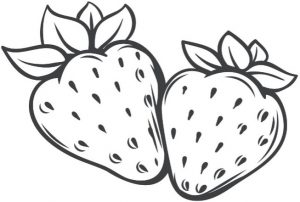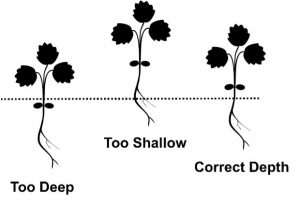Strawberries
Strawberries
What you’ll need:
- Strawberry Plants
- T&C Soil Enhancer
- Fertilome Root Stimulator
Optional:
- Soil Sulfur
- Save-a-Tree
- Bird Netting

Step 1: Prepare the soil. Spread T&C Soil Enhancer 1 to 3 inches deep on soil. Sprinkle 1 to 3 lbs. of soil sulfur per 100 sq. ft. Spade or rototill into soil.
Step 2: Plant in a sunny area. Strawberries do best with at least 6 hours of sun. Plant 12 to 18 inches apart, just deep enough to cover all the roots, but no deeper.
Step 3: Water. Water in with Fertilome Root Stimulator solution (according to directions on bottle). Thereafter water with plain water when soil surface is dry.
Step 4: Feed monthly. Feed your plants monthly with Save-A-Tree or T&C Fruit & Flower Food. It is a good idea to apply Soil Sulfur to the bed each year to keep the leaves from yellowing.
Step 5: Enjoy your harvest. Strawberries produce fruit their first year! Everbearers produce all summer, but heaviest in early summer and early fall. June-bearers produce only in June, which makes them good for making jam.
Aftercare: If birds become a problem cover with bird netting (available at Town & Country) and anchor the edges with boards, rocks, or stakes. Also, Strawberries produce best on one-and two-year-old plants, so always allow some runners to root into new plants and remove the oldest plants each year.
Day Neutral: Everbearing type that produces all summer long.
Everbearing: Produce mainly in early summer and early fall.
June Bearing: Produce heavily for two weeks only during June. Great for making preserves.
Hardiness: Zone 3: Hardy to -40 deg. Zone 4: Hardy to -30. Zone 5: Hardy to -20 deg.
Strawberry Varieties
Day Neutral:
Albion (Zone 4) Large symmetrical berries have intense red color inside and out. Beautiful appearance. Exceptionally sweet taste. Excellent disease resistance. Everbearing. Very heavy yields. UC Davis 2006.
Eversweet (Zone 5) This everbearing plant produces sweet long cone-shaped strawberries. It will continue producing even when temperatures exceed 90ºF. Excellent for patio pots too.
Hecker (Zone 3) Vigorous exceptionally hardy everbearing strawberry with medium size berries. Excellent flavor. Great for fresh eating preserves and freezing. UC Davis 1979.
Seascape (Zone 4) Everbearing variety with high yields and very large fruit. Peak production in late summer. Attractive berries have an excellent flavor. Highly tolerant of many virus and diseases. UC Davis 1991.
Tribute (Zone 4) One of the best tasting everbearing strawberries. Produces a large crop of medium-size firm deep red fruit from early summer to fall. Excellent for fresh berries and frozen preserves. USDA 1981.
Everbearing:
Ft. Laramie (Zone 3) This super-hardy strawberry withstands the coldest high elevation climates without protection. Prolific runners make it good in hanging baskets too. Large crops of medium size berries. Wyoming 1973.
Ozark Beauty (Zone 4) Popular variety for over 60 years. Large delicious berries with sugar-sweet taste and juicy texture. Large crops of irresistible fresh fruit! Developed in Arkansas in 1955.
Quinalt (Zone 4) Large soft deliciously sweet fruit ideal for preserves or fresh eating. Produces strawberries on unrooted runners making it a good choice for hanging baskets. Developed at Washington State University.
June Bearing:
Shuksan (Zone 3) Large glossy red fruit in late June. Shuksan is very winter hardy and tolerates alkaline soils better than any other variety. Does not demand perfect drainage. Washington State University 1970.
Sequoia (Zone 5) These luscious red strawberries are extremely sweet. The berries are firm at first and soften as they enlarge. Longer harvest period than most Junebearers extending your harvest time. UC Davis 1968.
Note on pollinating: All strawberries are self-pollinating, meaning you only need one plant to produce fruit. Each plant will produce 1 to 2 pints per season.



